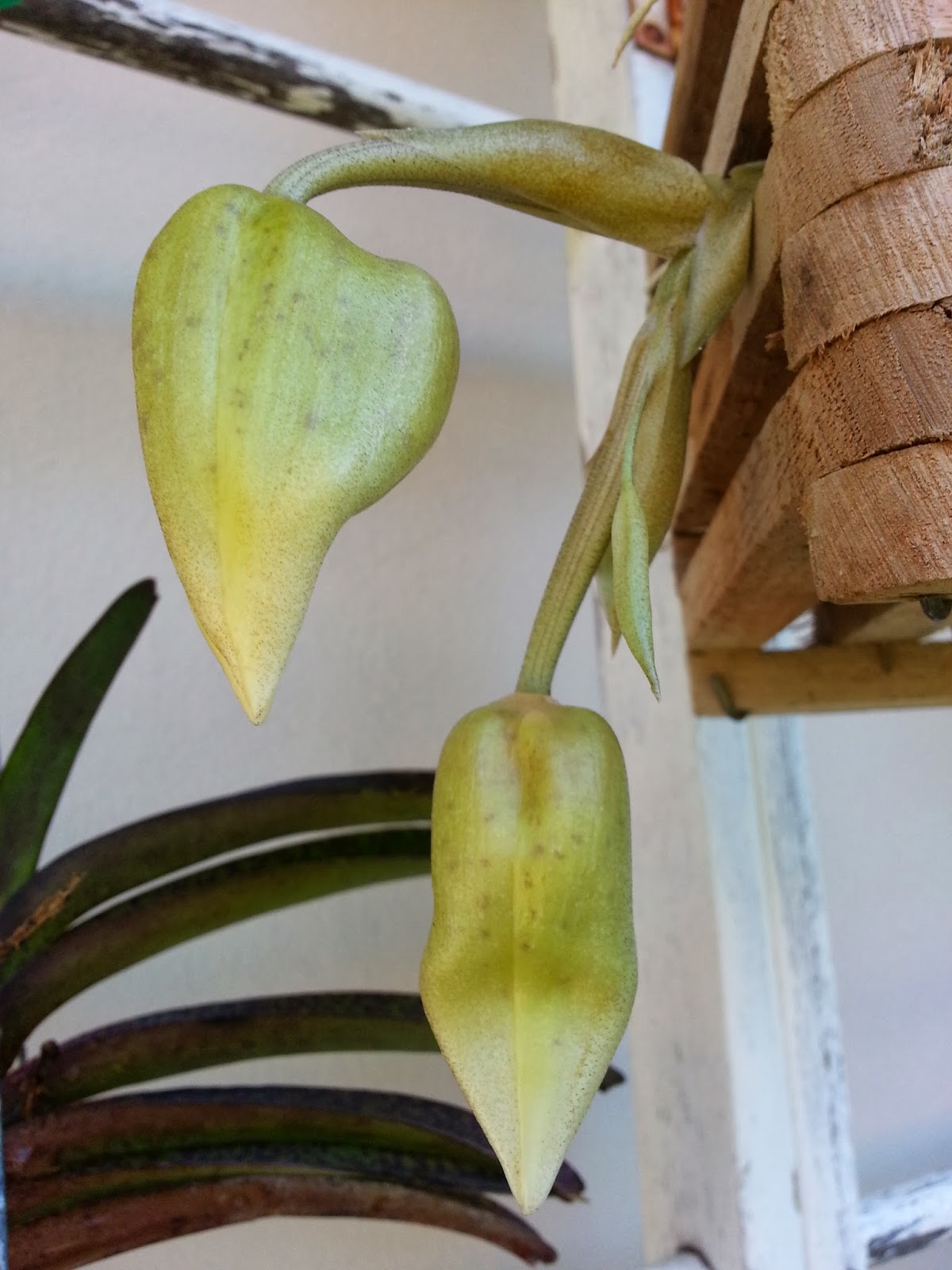The particular species that has assented to put on a show is Stanhopea whittenii, which is apparently fairly closely related to Stanhopea oculata. Primary differences are in the number of flowers (2-3 as opposed to many more), the shape of the flower and the scent. It was only described just over a decade ago, in 2002.
Speaking of scent, ours (to my nose) smells like menthol-vanilla, particularly heavy on the vanilla, perhaps with a touch of cinnamon. It's mounted quite far above head height, so I've only caught whiffs of it here and there, rather than my usual method which involves a deep inhale right into the flower!
Stanhopea are all very fragrant orchids. Their scent is a cunning ploy to attract their pollinators, a group of tropical bees called Euglossine bees, sometimes commonly known as "orchid bees" for this behaviour. The males of these bees seek out various strongly scented substances to impress their females - I guess it's the bee equivalent of a nice Eau de Cologne, except instead of buying a bottle, you have to zoom around the forest gathering your own essential oils first! These mostly solitary bees are generally spectacular metallic colours, in green, blue and gold livery; they also commonly visit Catasetum, which I covered briefly in my previous post. These chemicals are, for the most part (but not always), quite pleasant to humans too, and Stanhopea generally produce them in copious, room-filling abundance. Almost all of these orchids flower by sending a spike downwards (through the potting medium); for this reason, they're almost always grown in baskets of various sorts, or mounted, so this flowering habit can be accommodated. If you have the room, and suitable cultural conditions, they're well worth the effort.
In terms of cultural conditions, apparently they like "breezy" conditions, and [very (>3000 foot candles, no direct sun)] bright light - perhaps the move outdoors into severe winds covered the "breezy" part of their cultural preferences, and the light certainly increased; being outdoors, I tend to water more - and moisture is a key part of their cultural needs... Sadly, the flowers are typically short lived (typically in the region of only three all too short days) but in that time they certainly pump out some fragrance!
The best article I found on this species is here, and covers its discovery and naming and has various additional pictures and information on distribution; IOSPE has a page too as does Wikipedia. The genus Stanhopea and the derivation of its name is extensively covered here. Cultural information is covered here and here. Essence of Stanhopea is an orchid blog from Australia that covers this genus extensively.
Pictures, I hear you cry? Certainly!
 |
| Stanhopea whittenii buds, 5/2/2014 You can see it gets some morning sun, but is protected for the rest of the day by the roof and garage. |
 |
| Stanhopea whittenii buds - two days later (7/2/2014) |
 |
| Stanhopea whittenii Two days later they opened (this is from today [10/2/2014], the day after they first opened) |
 |
| Stanhopea whittenii You can clearly see the big black blotches that might have confused people into classifying these as Stanhopea oculata. |
 |
| Stanhopea whittenii View from underneath Stanhopea are sometimes known as "upside down" orchids as their flowers usually face downwards |
 |
| Stanhopea whittenii lateral view |




